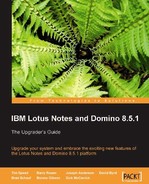There are four distinct phases to the lifecycle of an SOA: model, assemble, deploy, and manage.
This lifecycle provides a framework within which an SOA can be built. However, businesses and IT organizations can choose where within the lifecycle to begin an SOA implementation. (One of the key values of SOA is the ability to get quick benefits by assembling and deploying services without waiting for a full-blown SOA definition.)
The Model phase of the SOA lifecycle starts with discovering which program assets can be reused in new applications. You can discover these hidden assets and determine which programs are good candidates for reuse in web applications with a number of tools already on the market.
As we stated earlier, the key value of an SOA is the surfacing of business services. So as to properly identify the business services and understand how they fit into the business, SOA modeling establishes a common understanding of the business processes, objectives, and outcomes between business and IT. The SOA model helps make sure that any IT application meets the needs of the business and provides a baseline for business service performance.
At the end of the Model phase, you should have a clear inventory of assets showing where they can be used in the business processes that you have modeled.
The Assemble phase is where programs are wrapped as services and used to create composite applications, which bring together core assets that often span multiple platforms. If you use legacy host transactional environments, the tools simplify the development of new web user interfaces, traditional terminal interfaces, and backend business logic.
During the Assemble phase, you can create services out of existing assets such as ERP and financial systems, legacy host applications, and other solutions that are currently running your business. If no functionality exists, you can create and test a service to deliver the functionality required for your business process. Once the required services are available, you can orchestrate them so as to implement your business process.
Lotus Notes 8.5 includes features to support the Assemble phase of SOA development. We will review those capabilities later in this chapter.
During the Deploy phase, you can configure and scale the runtime environment to meet the service levels required by your business process. You can optimize the services environment to reliably run mission-critical business processes while providing the flexibility to make updates dynamically in response to changing business requirements.
Once it is configured, you can deploy your business process into a robust, scalable, and secure services environment. This service-oriented approach can reduce the cost and complexity associated with maintaining numerous point-to-point integrations.
The Manage phase involves managing the underlying service assets, establishing and maintaining service availability and response times, along with managing and maintaining version control over the services that make up your business processes. The management phase ultimately enables you to make better business decisions sooner than previously possible.
You can monitor key performance indicators in real time to get the information required to prevent, isolate, diagnose, and fix problems, enabling you to provide feedback into the business process model so as to enable continuous improvement.
Once the SOA has been deployed, you'll need to continue to secure, manage, and monitor the composite applications and underlying resources from both an IT and a business perspective so as to get full value from the SOA. Information gathered during the Manage phase on key SOA indicators can provide real-time insight into business processes, enabling you to make better business decisions, and feeding information back into the SOA lifecycle for continuous process improvement.
